Your shopping cart is empty!
MENU
*** DISCONTINUED *** This product is discontinued and there is no designated replacement. Contact Westward Sales to discuss an alternative option.
The EMS1G48 is a low-cost top-of-rack switch for 1 Gbps links to servers and 10 Gbps uplinks to the 40 Gbps switching fabric in the core. An Emerald KVM network may start small, but it's infinitely scalable to meet your expansion needs and future technology path just by adding endpoints, with no additional chassis or cards required.
Emerald comprises of a choice of transmitters connecting computers or virtual machines to the system and receivers connecting the user consoles. This high-performance Emerald network switch with (48) 10/100/1000-Mbps twisted-pair ports and (4) SFP+ 10-GbE uplink ports ensure trouble-free KVM over IP extension and matrix switching connections. A range of SFP/SFP+ transceivers provides best performing video quality and KVM extensions over the required distances. Use the Emerald transmitter to connect DisplayPort servers with resolutions up to 4K60, transparent USB, serial, and audio to your Emerald System.
The EMS1G48 makes your migration painless, enabling you to scale access infinitely and gradually across buildings, campuses, and the wide-area network, using your existing network infrastructure - with switching between sources at speeds of less than half a second.
Emerald is the first KVM platform that supports pixel-perfect 4K DisplayPort video at 60 Hz over standard IP network switches. Image transmission with mathematical lossless compression visualizes every single pixel at 60 fps with 10-bit color depth. If you're not ready for 4K, start with the Emerald 2K options, supporting one or two full HD DVI channels, and migrate to 4K at your own pace by transitioning individual user groups when the need arises.
More and more physical servers are being replaced by virtualization, allowing better performance, availability, scalability, and return on investment. Emerald simplifies access to both physical and virtual servers with virtual machine support for VMware, Microsoft, and Citrix, using RDP 8.1, RemoteFX, and PCoIP, among others.
All Emerald transmitters and receivers feature copper or fiber connectivity through one (HD) or two (4K) flexible SFP+ slots. Your 24/7 operation requires network resilience. Use the redundant network ports on the Emerald units to provide continuous, uninterrupted operation even if one network link experiences loss-of-service. Connect the endpoints either through two alternative direct links, a direct link, and a network connection or two independent networks.
For HD video, Emerald requires a standard Gigabit Ethernet network and possibly a 10 Gigabit aggregate switch, depending on how many endpoints you have. For 4K video, you'll need a standard 10 Gigabit Ethernet network with a 100 Gigabit aggregate switch for 20+ endpoints. For both, the network infrastructure required by Emerald can be built with IEEE 802.3 standards-based components from Black Box or other manufacturers.
Emerald supports two ways to manage the system: locally via the receiver's OSD or the Boxilla central KVM manager. Emerald, in combination with Boxilla, enables timesaving, controllable presets, and multi-user settings. Monitor network usage, define user access rights, and set up automated intrusion alerts. You can also pool designated CPU resources, allowing for user selection by type of server/PC/desktop rather than by individual dedicated resource. Even more important, you can prepare for instantaneous recovery from disasters with one-click access to an entire backup control room in a different location. The KVM main control room configuration can be replicated anywhere you have a network connection.
| Network Management | |
| QoS | Access Control Lists, Prefix List, Route-Map, Rate Shaping (Egress), Rate Policing (Ingress), Scheduling Algorithms, Round Robin, Weighted Round Robin, Deficit Round Robin, Strict Priority, Weighted Random Early Detect |
| System Configuration | Network Management, SNMPv1/2, SSHv2, FTP, TFTP, SCP, Syslog, Port Mirroring, RADIUS, IEEE 802.1X, Support Assist (Phone Home), Netconf APIs, XML Schema, CLI Commit (Scratchpad), sFlow |
| Protocols | MAC addresses: 80 KB, IPv4 routes, IPv6 routes, switch fabric capacity: 260 Gbps (full-duplex), forwarding capacity: 131 Mpps, link aggregation, Queues per port: 8 queues, Layer 2 VLANs, MSTP, VRF-lite, Line-rate Layer 2 and Layer 3 switching, IPv4, IPv6, Multicast table, LAG load balancing, 4 MB packet buffer memory, 2 GB CPU memory |
| Ratings | |
| Operating Temperature | 32 to 113°F (0 to 45°C) |
| Storage Temperature | -40 to 149°F (-40 to 65°C) |
| Humidity | 5 to 85% (RH), non-condensing |
| Certifications | UL/CSA/EN 60950-1 second edition, EN 55032: 2015+A1:2007 (CISPR 32), FCC CFR 47 Part 15, Subpart B:2009, Class A, EN 300 386 V1.4.1:2008 EMC for Network Equipment, EN 55024: 1998 + A1: 2001 + A2: 2003, EN 61000-3-2: Harmonic Current Emissions, EN 61000-3-3: Voltage Fluctuations and Flicker, EN 61000-4-2: ESD, EN 61000-4-3: Radiated Immunity, EN 61000-4-4: EFT, EN 61000-4-5: Surge, EN 61000-4-6: Low Frequency Conducted Immunity |
| Safety Standards | EN 60950-1, Second Edition, IEC 60950-1 Second Edition Including All National Deviations and Group Differences, EN 60825-1 Safety of Laser Products Part 1: Equipment Classification Requirements and Users Guide, EN 60825-2 Safety of Laser Products Part 2: Safety of Optical Fiber Communication Systems, FDA Regulation 21 CFR 1040.10 and 1040.11 |
| Download Name | File Size |
| Black Box OS10.5.1 Enterprise Edition User Guide | 17.19MB |
| Black Box OS10 Enterprise Edition 10.4.0E User Guide | 5.93MB |
| Black Box EMS1G48 Hardware Installation Guide | 1.03MB |
| Black Box Emerald Unified KVM Family Datasheet | 4.13MB |
| Image | Model | Product Name | Price | |
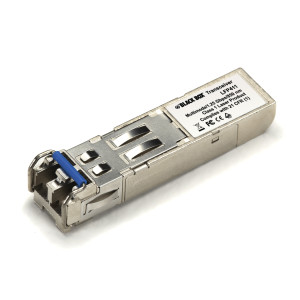 |
LFP411 | Black Box LFP411 Gigabit SFP Module Transceiver, Multimode, 850nm, 550 m, LC | $64.29 | |
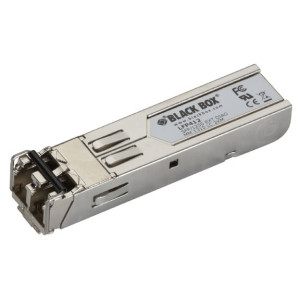 |
LFP412 | Black Box LFP412 Gigabit SFP Module Transceiver, Multimode, 1310nm, 2km, LC | $96.47 | |
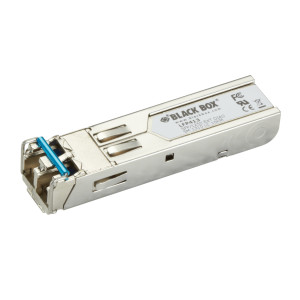 |
LFP413 | Black Box LFP413 Gigabit SFP Module Transceiver, Extended Diagnostics, Single-Mode | $70.95 | |
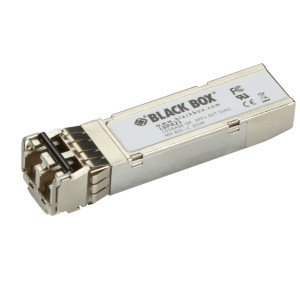 |
LSP421 | Black Box LSP421 10G SFP+ Transceiver, Extended Diagnostics, Multimode, 300m | $243.78 | |
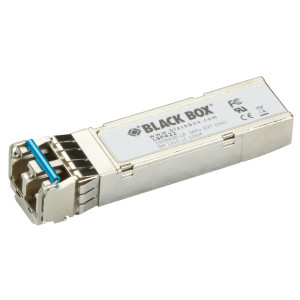 |
LSP422 | Black Box LSP422 10G SFP+ Transceiver, Extended Diagnostics, Singlemode, 10 km | $402.69 | |
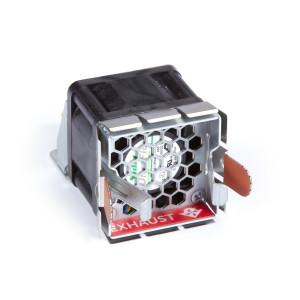 |
EMS1G48FAN | Black Box EMS1G48FAN Replacement Fan for the EMS1G48 Emerald Switch | $0.00 | |
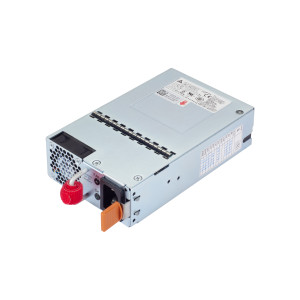 |
EMS1G48PS | Black Box EMS1G48PS Replacement Power Supply for the EMS1G48 Emerald Switch | $0.00 |